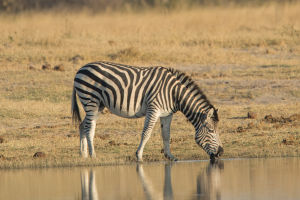When we think of zebras, the first thing that comes to mind is their black and white stripes.
Many of us might assume these stripes are there to help zebras blend into their environment, hiding them from predators. But what if we told you that this common idea isn't the whole story?
Today, let's explore together why zebra stripes are far more complex and interesting than just camouflage.
Stripes Are Not Just for Camouflage
We often imagine that the stripes help zebras disappear into the tall grasses or confuse predators. However, studies have shown that the stripes don't effectively hide zebras from predators like lions or hyenas. Instead, zebras stand out quite clearly on the African plains.
So, why do zebras have stripes? It turns out that scientists have found several surprising benefits that explain this unique pattern.
Keeping Bugs Away: The Stripe Bug Shield
One of the most important discoveries is that zebra stripes help protect them from biting flies and other insects. These pests are a big problem for many animals, as their bites can cause irritation or even spread diseases.
Research shows that the stripes confuse flies' vision, making it harder for them to land on zebras. Flies tend to avoid striped surfaces because the pattern disrupts their perception of movement and shape.
When we think about it, this natural bug repellent is an incredible survival advantage for zebras living in places full of bothersome insects.
Stripes Help with Cooling
Another fascinating fact is that zebra stripes may play a role in temperature regulation. In the hot African savannah, keeping cool is crucial.
Scientists have observed that the black and white stripes heat up differently under the sun. The black stripes absorb more heat, while the white stripes reflect it. This temperature difference creates small air currents around the zebra's body, helping to cool it down.
Together, we see that these airflows act like a natural air conditioner, giving zebras a way to beat the heat without needing sweat or panting as much.
Identity Protection: Avoiding "Identity Theft"
Here's another interesting point: every zebra's stripe pattern is unique, much like a human fingerprint. We can think of these patterns as a way for zebras to recognize each other, especially mothers and their foals.
Besides social recognition, stripes also help zebras avoid "identity theft" from other animals. Predators sometimes target the weakest or most isolated individuals. The stripes may confuse a potential predator, making it harder to single out one zebra from the herd.
This unique stripe "ID" system helps zebras stay safer by blending their individual identities into the collective herd.
What We Can Learn From Zebras
When we look at the stripes more closely, we realize that zebras show us how nature finds clever solutions to complex problems. Their stripes are not just about looking cool—they serve multiple practical purposes that help zebras survive in a tough environment.
We can appreciate the balance of beauty and function in these amazing animals and understand that things in nature often have hidden depths.
Have You Noticed Stripes in Other Animals?
Next time you see a zebra, we encourage you to think about the many reasons behind those striking stripes. Have you ever seen other animals with unique patterns and wondered why? Share your thoughts or questions — we're curious about your experiences!


